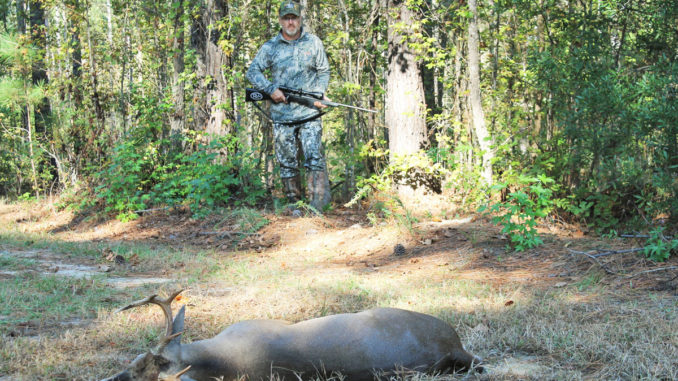
Erase these boo-boos from your resume and you’ll be on your way to using more tags on bigger bucks.
During the past three decades, the tactics used to hunt whitetail deer have evolved greatly, but hunting mature bucks is still a tough challenge. Mistakes are still being made, and for some hunters, these mistakes become habit — and they wonder why some hunters seem to kill big bucks and they don’t.
Let’s look at five mistakes hunters make that hinder their odds at killing big deer.
Understanding, hunting the wind
Understanding the wind is the most important element of deer hunting. Successful hunters know and understand the wind.
A deer uses its sense of smell as it No. 1 defense mechanism. If it gets a whiff of anything out of the ordinary, it goes on full alert. Barry Wensel, considered by many as one the greatest bowhunters of all time, said, “A mature buck will sniff the air, (and) when he smells something he is suspicious of, more times than not, he simply turns around and retreats.”
A buck not seen, is buck not killed. If we never see the buck, we will never kill him.
Not hunting the wind is only part of this mistake hunters make. Every time a hunter ignores the wind, he or she educates the deer in the immediate area. Successful hunters have stands prepared for any wind direction, and they sit only in stands where the wind is in their face. They let the wind decide where they will hunt.
Scent control
It may seem repetitive to add scent control after discussing the importance of hunting the wind. But just as hunting the wind is critical, so too is controlling your scent as much as possible. Too many hunters make the mistake of simply ignoring scent control.
Charlie Morris of Gloverville, S.C., hunts exclusively on public land in and around South Carolina’s Aiken and Edgefield counties, and he has a history of killing mature deer there. He guards against scent problems.
“I do everything I can to put the odds in my favor,” he said. “I never expose my hunting clothes to any outside smells or odors. When they are washed, they are stored in an air-tight container, and when I get to the woods I plan to hunt. I take the container and move away from the truck — and then I get dressed.”
Morris said his regimen for scent control has worked very well.
“Do everything you can to put the odds in your favor,” he said.
Scouting and stand access
Morris also believes that scouting is critical to killing big deer,. He has been scouting for good stand sites since the end of last season.
“I spend a lot of time scouting. I am never satisfied with my set up. I can always improve my situation.” said Morris, who believes that one of the biggest mistakes hunters make is not finding the best way to access their stands. “If I can’t get to my stand without spooking every deer in the county it is not a good stand.”
As soon as Morris finds a potential stand location with a lot of promise, he takes the time to make a good trail to the stand so he will not alert deer on the way in.
Myron Williams of Cheraw, S.C., another veteran hunter, goes a step further. Using a leaf blower, he removes debris from the forest floor for at least 75 yards from his stand.
Morris also said too many hunters don’t do enough offseason scouting.
“It is fine with me if they don’t scout as much as I do,” he said, “but I believe that’s something that helps me be successful. I spend a lot of time in the woods.”
Total concealment
Greg Braselton of Greer, S.C., is a firm believer in concealment, which he describes as a three-part commitment.
“It’s not enough to be silent, still and invisible. You have to do all three all of the time,” he said.
Braselton tests every item he hunts with under a black light, because deer have the ability to see ultraviolet light, and the black light will unveil any dyes in the clothing or gear that glows in ultraviolent light.
Braselton readily admits that staying silent, still and invisible is difficult, but insists it is necessary. He said camouflage is important, but so too is being silent and still. Be focused, and stay on point all of the time.
Expectations of success
Success begets success. One of the biggest mistakes hunters make happens between their ears. They enter the woods not expecting to kill a big deer or even to see a deer.
Braselton said that what separates successful hunters from unsuccessful hunters is “setting a desired expectation.”
Set an expectation and make it happen.
“I expect to see a sunrise. I expect to see a deer. I expect to have some experience that makes it all worthwhile,” Braselton says.
By setting these expectations, every hunt is a successful one. Confidence is paramount to killing big deer.

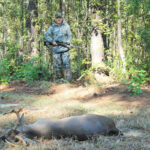
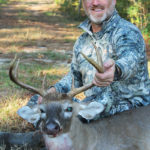
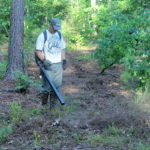

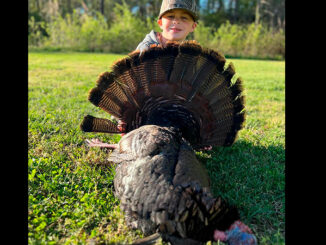

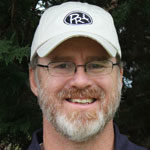
Be the first to comment